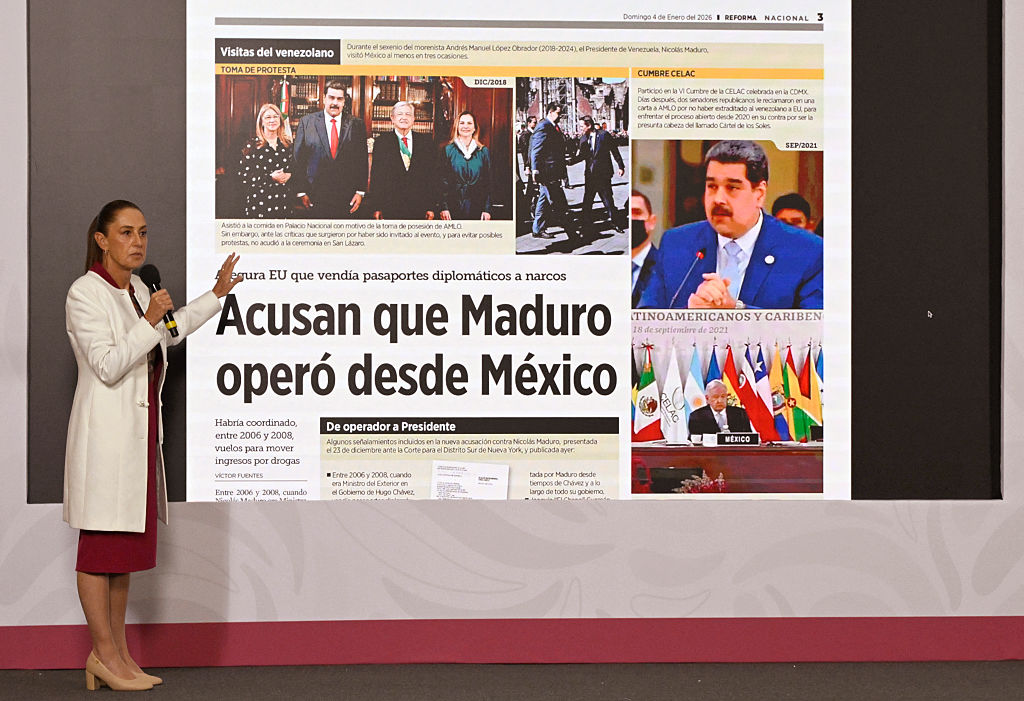Congressional Testimony: Addressing the Root Causes of Migration
Congressional Testimony: Addressing the Root Causes of Migration
Central America needs investment for democracy and economic growth, says AS/COA’s Eric Farnsworth in testimony to the House Committee on Foreign Affairs.
ADDRESSING ROOT CAUSES OF MIGRATION FROM CENTRAL AMERICA THROUGH PRIVATE INVESTMENT: PROGRESS IN VP HARRIS’ CALL TO ACTION
HEARING BEFORE THE HOUSE COMMITTEE ON FOREIGN AFFAIRS
SUBCOMMITTEE ON INTERNATIONAL DEVELOPMENT, INTERNATIONAL ORGANIZATIONS AND GLOBAL CORPORATE SOCIAL IMPACT, AND SUBCOMMITTEE ON THE WESTERN HEMISPHERE, CIVILIAN SECURITY, MIGRATION, AND INTERNATIONAL ECONOMIC POLICY
JUNE 22, 2022
ERIC FARNSWORTH
VICE PRESIDENT
COUNCIL OF THE AMERICAS
*** As Prepared for Delivery ***
Mr. Chairmen, Ranking Members, Members: thank you for the opportunity to testify today.
Council of the Americas is a business organization that for almost 60 years has promoted a U.S. agenda with the Americas based on democracy, open markets, and the rule of law. Our members come from all sectors, with long-standing investments and other business-related activities in Central America and across Latin America, the Caribbean, and Canada.
From Promise to Stagnation and Migration
I have been involved in issues related to Central America since 1990, when I joined the U.S. Department of State. One of the highlights of my time in government was the opportunity to join the official U.S. delegation to the 1996 signing of the peace accords in Guatemala ending decades of civil war in the country and bringing to a close the era of politically-motivated civil conflict across much of Central America. It was a time of cathartic joy and immense promise.
What we understood, both then as now, was that in order to lock in democracy and expand economic growth on a sustainable basis coming out of brutal conflict, Central America would require investment, both domestic and foreign, and lots of it. We knew that without the promise of good jobs in the formal economy, and the education and training to prepare for such jobs, recently demobilized guerrillas and others with uncertain prospects might be tempted by unpalatable options, including criminal actions, drug trafficking, and gang activities, or, alternatively, they might be inclined to migrate, seeking a better life in the United States or elsewhere.
To stabilize fragile economies, the United States had maintained unilateral trade preferences with Central America for several years already, but it was widely accepted that job-creating investment would lag unless such preferences were made both reciprocal and permanent. Congress agreed, responding in 2005 with passage of the freer trade agreement with Central America and the Dominican Republic, CAFTA-DR.
Unfortunately, the agreement was crafted in such a manner as to restrict access for some products in which Central America and the Dominican Republic were most competitive, including agriculture and also textiles and apparel. It did little to develop the rural economy, from where many migrants originate.
The truth is that many in Central America believed that CAFTA-DR was the finish line; having achieved a trade agreement with the United States, they thought riches would automatically accrue to their respective nations. Rather, CAFTA-DR was in reality a starting line, providing the region with a concrete means to compete in the global economy without guaranteeing success. The framework for investors was greatly improved, but the regional business climate was something quite different and required attention and focus.
Exogenous factors have also contributed to regional underdevelopment. Natural disasters including hurricanes and the man-made devastation of drug trafficking, increasingly facilitated both by the Chavez and Maduro regimes in Venezuela and exacerbated by weapons trafficking from the United States, have conspired this century to weaken regional economies and social conditions. Crime and criminal behavior have ballooned and threaten to overwhelm state institutions and security. Corruption is now pervasive. More recently, the covid pandemic hit the region hard.
At the same time, however, political and business leaders failed to take full advantage of CAFTA-DR provisions by reforming their economies, expanding markets, eliminating repetitive regulations and rules, improving oversight, upgrading infrastructure including reducing the cost of electricity, focusing on rural development and a host of other actions that could have been taken to improve regional competitiveness. (Indeed, during negotiations for the ultimately aborted Trans-Pacific Partnership, Central American nations, fearing greater competition, sought to derail the discussions in Washington rather than redouble efforts to improve their own competitiveness.) As a consequence of all these factors, investment including domestic investment has indeed underwhelmed over the years, suppressing potential economic growth and job creation.
Conversely the U.S. economy, thankfully, has been a job-creating machine over the past two years and we are now at full employment with many employers reporting difficulties in hiring qualified workers. Coupled with stagnant regional economies, uncertain job prospects, and high crime and social deterioration in Central America, it should be no surprise that a vibrant U.S. labor market and also perceptions of more permissive U.S. migration provisions and border enforcement would draw new flows of migrants north, which is what we have witnessed.
Administration Strategy and “Call to Action”
The Biden Administration recognizes these persistent, long-running trends and seeks to address irregular migration to the United States by focusing on the “root causes” of migration, including economic stagnation, lack of jobs in the formal economy that come with state protections and benefits, disaster recovery, lawlessness and criminal abuse, and social disintegration. While most migrants would prefer to remain at home, it is argued, they have little choice but to seek the work and safety for themselves and their families that they are unable to receive at home.
These assumptions are not new; they have largely undergirded U.S. policy toward Central America for years. The United States has expended significant resources, and yet the issues have become even more challenging. Clearly, something isn’t working.
What has shifted over time is the emphasis from economic development to enforcement and now back, as well as a new reluctance to work with governments in the Northern Triangle—El Salvador, Guatemala, and Honduras and, separately, Nicaragua—resulting from allegations of gross corruption and anti-democratic behavior. There is also an expressed reluctance to work with the regional private sector and those on the ground in the Northern Triangle, which is a particular complication for those internationally who may be looking to invest in the region. That essentially leaves the NGO community, which has been active in Central American relief for decades but which is not necessarily structured for meaningful job creation on the local economy or migration abatement at the macro level. These are extremely difficult issues to sort out and have vexed U.S. relations with Central America for years.
To her credit, the Vice President has brought high-level attention to these issues, having traveled twice to Central America in the past year seeking to encourage international investment in the region. She has also announced several initiatives, most recently at the Summit of the Americas in Los Angeles, highlighting private sector commitments to the Northern Triangle. This approach in some ways mirrors that of former Secretary of State Hillary Clinton, who led a similar effort early in her tenure, and it has achieved some noteworthy corporate announcements. Full implementation of commitments will be key, as will the sustainability of investments over time, particularly given mixed messages that the private sector has been receiving about corruption and the suitability of investing in the Northern Triangle generally. The strategy will take years to play out fully over the longer term. Indeed, we have been seeking better results along these lines since the early 1990’s. In the meantime, anticipate that migratory pressures from the region to the United States will continue.
Toward Long Term Sustainable Development
Adequately addressing the issues that plague Central America, however, will require a paradigm shift. To change behavior, change incentives. Change the game. Get local constituencies onboard as allies. Our strongest, most effective tool to promote long-term development across the region is trade, and yet to this point it is “the dog that hasn’t barked.” Enhanced trade must be part of the conversation.
The key, which is fully consistent with the Administration’s broader policy approach toward Latin America and the Caribbean, is to integrate Northern Triangle and Caribbean Basin nations fully within North American supply chains. This can be done on a sectoral basis, such as autos and auto parts, healthcare products including PPE, textiles and apparel, agriculture, clean energy and environmental goods and services, and the like, or it can be done on a more comprehensive basis. And in all circumstances, wider uptake of the digital economy will enable greater economic efficiency, anti-corruption efforts, and growth.
All of this would be facilitated by taking a fresh look at regional trade agreements. CAFTA-DR was indeed a beginning, but it was structurally flawed. Subsequently, provisions in the original agreement have been overtaken by the updated USMCA that the United States signed with Mexico and Canada, putting the CAFTA-DR region at a disadvantage in the context of attracting investments relating to North American supply chains. As well, in almost 20 years of CAFTA-DR, the global economy has shifted fundamentally, and the agreement must be updated and upgraded to restore parity with Mexico and other U.S. trade partners.
Here's how to do it: in consultation with USMCA partners Canada and Mexico, invite all current CAFTA-DR countries to join USMCA a cutting edge agreement passed overwhelmingly on a bipartisan basis—but negotiate the terms of accession on a country-by-country basis, rather than seeking to merge CAFTA-DR as a bloc into USMCA. That way, countries that are ready to go, such as Costa Rica and the Dominican Republic, can join quickly. Others, including the Northern Triangle countries, would be welcome to join once they prove the ability to meet the obligations of membership in the agreement. Non-democracies including Nicaragua would not be welcome to join, and we can also then moot the stale debate of whether Nicaragua should be suspended from CAFTA-DR. Eventually, other nations maintaining freer trade agreements with the United States, including Panama, Chile, Colombia, and Peru, among others, could also be invited to join.
Immediately this would change the game by creating internal competition and a “race to the top” across the region. Countries such as El Salvador, Guatemala, and Honduras that face exclusion would find it in their interests to take on necessary reforms and meet existing obligations. These would be demanded by internal constituencies including the domestic private sector who would be meaningfully disadvantaged by becoming less competitive with their regional peers. Too many self-interested parties benefit from the current system. That must change.
Meantime, to make themselves more attractive to investors, the Northern Triangle nations and others, too, must take unilateral steps to bring their economies into conformity with USMCA provisions. First movers will gain the investment advantage, which will manifest in job creation in the formal economy. And Washington can reprogram assistance from existing activities to focus on technical assistance building the regional competitiveness agenda, including steps toward regional convergence on regulations and standards, infrastructure, power generation, procurement, and security, among other topics.
To attract investment, we have to look at these issues from the private sector perspective. In other words, why would someone seek to invest in a very small, impoverished, insecure nation shut out of North American supply chains? In short, most would not. These are the issues that must therefore be addressed, and the United States can serve as both a catalyst and an important resource to drive these conversations, with the ultimate goal the sustainable integration of the Northern Triangle nations and others into the North American supply chains to increase investment, drive development, and reduce poverty, insecurity, and the urge to migrate. It's time to get this done.
Thank you, again, for the opportunity to testify before you today.










